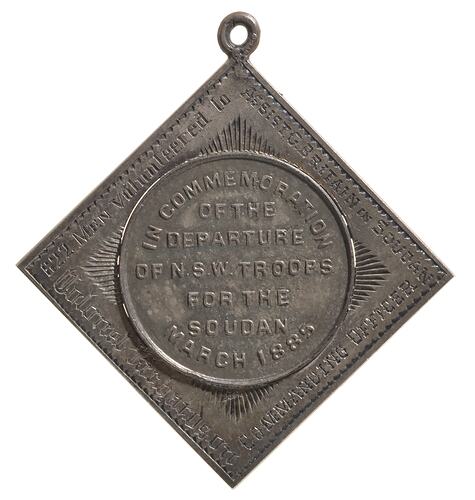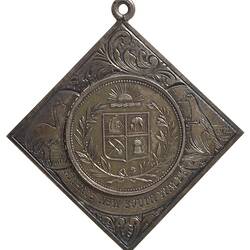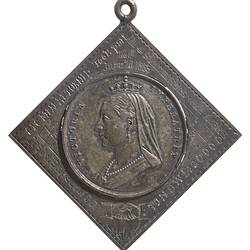John Soame Richardson was born in Norfolk, England on 16 March 1836. He was educated at Rugby School, and became an ensign in the 72nd Highlanders in 1854. The following year, at the age of 19, he was commissioned lieutenant. He soon saw action at the siege of Crimea and the fall of Sebastapol, and received the Crimean Medal and Clasp.
Richardson joined the 12th Regiment in England and came to Australia in 1858. He acquitted himself well, and in 1860 was appointed adjutant and travelled to New Zealand to fight in the Maori wars. In 1862 he was back in Sydney, and married Jeannie Strachan. They soon had two sons and two daughters. Richardson's military success continued, and in 1863 he was promoted to captain. The following year he left the imperial service and returned to New South Wales. He became inspecting field officer of the Volunteer Forces in 1865, with the rank of lieut-colonel. He re-organised the forces and initiated a system of modest payments to volunteers which helped to improve the quality of the units.
When the British withdrew their troops in 1870, Richardson was appointed president of a new commission on defence and of a board for inspecting and maintaining colonial war equipment supplies. In August 1871 he became commandant of the permanent and volunteer military forces of New South Wales, and was promoted to colonel in 1876. In 1881 he became a member of the royal commission on military defences. The following year, in spite of somewhat poor health, he inspected the battlefields of the Franco-Prussian war in an attempt to understand changes in warfare.
On 11 February 1885 New South Wales offered a contingent to support Britain in the Soudan campaign. Richardson was appointed to command Australia's first expeditionary force, consisting of 750 men. They left Sydney to great fanfare on 3 March and reached Suakin on 29 March. The force saw little action and suffered more from fever than battle. Nevertheless, it took part in the advance on Tamai, and Richardson was mentioned in dispatches. The force returned to Sydney on 23 June, again to great acclaim. Richardson himself was raised to major-general, made CB and awarded the Sudan Medal and the Khedive Star.
Richardson was at the height of his career, but found himself facing government opposition to his proposed reforms, and some professional enmity. His mental health deteriorated, and he was admitted to a private mental hospital and later the Hospital for the Insane in Callan Park. He died there on 9 June 1896, aged 70. He was buried with full military honours.
References:
Australian Dictionary of Biography website http://adbonline.anu.edu.au/adbonline.htm
More Information
-
Keywords
-
Localities
-
Authors
-
Article types


